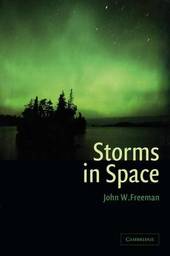
|
Storms in Space
Paperback / softback
Main Details
| Title |
Storms in Space
|
| Authors and Contributors |
By (author) John W. Freeman
|
| Physical Properties |
| Format:Paperback / softback | | Pages:162 | | Dimensions(mm): Height 229,Width 152 |
|
| Category/Genre | Cosmology and the universe
Meteorology and climatology
Popular astronomy and space |
|---|
| ISBN/Barcode |
9781107411531
|
| Classifications | Dewey:551.55 |
|---|
| Audience | |
|---|
|
Publishing Details |
| Publisher |
Cambridge University Press
|
| Imprint |
Cambridge University Press
|
| Publication Date |
29 November 2012 |
| Publication Country |
United Kingdom
|
Description
Storms in Space is the story of the mysterious region between Earth and the Sun, where violent storms rage unseen by human eyes. Disruption of spacecraft and satellites, television transmission failures and power blackouts are just a few of the effects of this powerful force of nature, caused by the charged particles and electromagnetic fields that dominate space. This is a highly readable synopsis of man's understanding of the space environment. The book discusses the similarities between storms on Earth and in space, and goes on to describe the causes and effects of space storms, and how they can be monitored by satellites and from observatories on Earth. The forecasting of space storms is presented, along with prospects for improved models in the future. This clear and engaging book will be valuable to space scientists, physicists, astronomers and anyone with an interest in understanding the phenomenon of space weather.
ReviewsReview of the hardback: '... a very readable account of space weather storms and their effects.' Dr David Boteler, Episode Review of the hardback: '[John Freeman] has taken the rather esoteric topic of the plasma weather in our near-space environment and presented it in a gripping and easily understandable fashion. ... Storms in Space works on many levels. It is an engaging, well-illustrated, eminently readable layman's introduction to this important aspect of solar-terrestrial relations.' David W. Hughes, The Times Higher Education Supplement
|